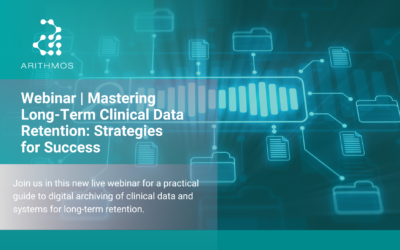A case study on an innovative signal detection solution implementation for a large size pharmaceutical headquartered in Italy.
What is a Safety Signal?
A safety signal is an information on a new or known adverse event (AE) that is potentially caused by a medicine and that warrants further investigation. Signals are generated from several sources such as spontaneous reports, clinical studies, scientific literature, real world data (RWD), etc. The European Medicines Agency (EMA), along with the regulatory authorities in the Member States and Marketing Authorisation Holders (MAHs) are responsible for detecting and managing safety signals.
Signal Detection Landscape: The EMA EudraVigilance Pilot
EudraVigilance is the system for managing and analysing information on suspected AE to medicines authorised or studied in clinical trials in the European Union (EU). The monitoring of EudraVigilance data is a legal requirement in the EU which applies to EMA, national competent authorities of Member States and MAHs. MAHs should continuously monitor the safety of their medicinal products and inform the authorities of any new information that might have an impact on the marketing authorisation.
The EMA, during a pilot period started on 22nd of February 2018, asked to the MAHs of the active substances included in the pilot list to monitor their products on the EudraVigilance database and inform the EMA and national competent authorities of validated signals coming from their medicines. All other MAHs with products not included in the EMA pilot’s list, also have access to EudraVigilance data and can integrate this data into their own signal management processes. However, during the pilot period, MAHs have no obligation to continuously monitor EudraVigilance and inform the regulatory authorities of validated signals via EudraVigilance. MAHs with active substances included in the list are invited to continue to monitor them in EudraVigilance for the duration of the pilot, expected to end in December 2024. So far, the following feedback has been reported:
- The current “recommended” methods for signal validation are only suitable for situations where there is a large number of patients and adverse drug reactions (ADRs) reports.
- The amount of additional information on potential signals outside of what is reported to EMA that can be found by individual MAHs is extremely limited.
- Signal monitoring by pharmaceutical companies should bring additional information about the benefit-risk profile of products, avoiding high additional burden of incorrectly assessed and duplicate signals.
Case Study: Advanced Reporting in Signal Detection
When it comes to signal detection (SD), the Good Pharmacovigilance Practice (GVP) guidelines (Module IX and Module IX Addendum I – Methodological aspects of signal detection from spontaneous reports of suspected adverse reactions) are regarded as the gold standard when monitoring safety signals.
However, market trends are showing some MAHs with specific focus on patient safety and innovation, prefer instead to adapt and match EMA reporting practices in the analysis and monitoring of safety signals. From here, the need to integrate signal detection processes with more sophisticated reporting platforms capable of pulling data from multiple sources and performing complex statistical analysis with a few simple inputs.
The following Use Case shows how technology integration can address some of the main challenges related to advanced signal detection: define a reliable statistical approach, allow real-time access to signal detection analysis and data, and make final pharmacovigilance (PV) users independent in the reporting activity.
Project Background, Targets and Objectives
The client’s PV unit needed to build a comprehensive SD dashboard and reporting application that allows to extract and manage safety database data (stored within Oracle© ARGUS Safety) and third party Lists within the client’s existing technology environment, avoiding any technology redundancy according to their sustainability principles.
The project objectives were to:
- Maintain adherence to the methodology adopted by the regulatory body (ref. EU Regulations’ <Screening for Adverse Reactions in EudraVigilance>: that represents a guideline for MAHs that need to implement equal or equivalent method for their own SD practices.
- To not disrupt Business Unit personnel habits in terms of graphical appearance of the produced reports, but in the meanwhile improving independence and accessibility of SD reporting.
- Improve the statistical analysis and methods to detect as earliest as possible signals that represents Drug Event Combination (DECs) of possible adverse reaction, introducing fine calculations and taking into consideration the concepts and good practices for selecting and prioritizing cases/events, such as Seriousness, Listedness, Fatal Cases / Life threatening Cases, Events part of the IME/DME list, or AESI (Company internal), Pregnancy, Medication errors, Lack of efficacy.
Arithmos designed the target result: the integration between client’s SAS Cloud validated environment (a web-based Software as a Service, already available to R&D GCD, R&D GRD and R&D GT Departments), Oracle© ARGUS Safety DB and third party Lists; a reporting solution able to get the best from the analytics potential of SAS software to implement best-in-class signal detection methodology.
Project Strategies and Deliverables
The solution development was based on a blend of competencies provided by Arithmos’ team: statistical analysis methodologies, SAS Cloud Analytics/Vaya management, statistical programming and a comprehensive expertise and knowledge of the Argus Oracle DB in order to optimize data mapping and retrieval as well as quality and consistency.
The statistical approach identified included both Disproportionality Method analysis, recommended by EMA, and Non-Frequentist (Bayesian) approach, due to its proven ability to raise attention on signals. The method applied resulted in four different statistical measures:
- ROR: Reporting Odds Ratio
- PRR: Proportional Reporting Ratio
- BCPNN: Bayesian Confidence Propagation Neural Network
- GPS: Gamma-Poisson Shrinkage
Disproportionality methods (1-2) represent the more intuitive, concept-proven, way to approach the problem, while the Bayesian approach (3-4) enlarge the scope of analysis to let users address the diverse nature of database/cases dimensions. Also, characteristics such as sensitivity, robustness etc. are variables that differentiate all the methodologies, and the differences between each other are considerable.
Plenty of scientific literature proves there is not an option of adopting only one method while discarding the others, as they all work in different ways, helping in reaching a consensus on warning about DECs. Therefore, a crucial element of the project was to develop a common interface being able to show all method’s results all together to appreciate their differences, and use them as insight for further investigation rather than being disoriented by dissimilar results. In addition, along with strict statistical calculations consideration, the application was designed to allow Users without technical, statistical or programming competencies to have a deep experience into data that normally need hours/days of manipulation to get a clear view of their significance.
Arithmos’ Pharmacovigilance Solutions
From pre-market product safety to post-market surveillance, Arithmos provides integrated vigilance services all along the product life cycle. We accelerate insights and optimise processes across the entire patient safety journey. In addition, we support customers on how to choose the right technology and to experience a smooth implementation and transition project.
About Arithmos
We are experts in the Life Sciences industry & Technology.
We help companies to gain the best business value through technology-enabled solutions and achieve excellence in business operations.
We are a long-standing partner for technology and expert service provider across Clinical, Regulatory, Quality, Pharmacovigilance and Medical Affairs domains.




